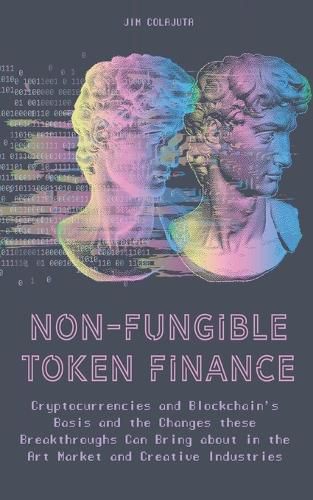Readings Newsletter
Become a Readings Member to make your shopping experience even easier.
Sign in or sign up for free!
You’re not far away from qualifying for FREE standard shipping within Australia
You’ve qualified for FREE standard shipping within Australia
The cart is loading…






This title is printed to order. This book may have been self-published. If so, we cannot guarantee the quality of the content. In the main most books will have gone through the editing process however some may not. We therefore suggest that you be aware of this before ordering this book. If in doubt check either the author or publisher’s details as we are unable to accept any returns unless they are faulty. Please contact us if you have any questions.
We live in a capitalist world in which supply determines demand. If you reduce supply or increase demand, society will be obliged to accept scarcity, whether genuine or perceived. On February 16, 2021, the artist Beeple sold his Everyday: The First 5000 Days for a record-breaking $69.3 million in cryptocurrency at Christie's auction house. No auction house had before authorized the sale of digital files created on blockchain technology, nor had they ever accepted cryptocurrencies as a payment option. Bitcoin shares have already climbed to over $24,000 during the Covid-19 epidemic of 2020, a 224 percent increase. Two months after Beeple's historic art auction, Bitcoin set a new high of more than $64,000 per share on April 14, 2021. As a result, everyone's attention was drawn to NFTs, new cryptocurrencies, and the blockchain.
Visual artists and musicians, writers, videographers, and others in the creative industries became aware of NFTs and the benefits they could provide to the art community. While the physical world appeared to be shutting down, the digital cosmos survived, grew, and entered new paradigms. Using the Internet as a revenue source during a global pandemic was a clever, new, and modern way for artists to continue their livelihoods. Artists have been able to advertise themselves to a wider audience as the NFT industry increases and becomes more mainstream, even if they have a minimal history in digital arts. Well-known public figures also benefit, perhaps reducing financial chances for lesser artists. Major brand familiarity and high-profile influencers encourage transactions across large corporations. Celebrities are now not only producing limited edition NFTs but also branding their own "social money." Social currency is a type of cryptocurrency released by a brand, community, or influencer to make their fans feel important and a part of their particular fandom.
This book examines the technical underpinnings of cryptocurrencies and blockchain, notably Non-Fungible tokens or "crypto-collectibles," and the changes these technologies can bring about in the art market and creative industries in general.
$9.00 standard shipping within Australia
FREE standard shipping within Australia for orders over $100.00
Express & International shipping calculated at checkout
This title is printed to order. This book may have been self-published. If so, we cannot guarantee the quality of the content. In the main most books will have gone through the editing process however some may not. We therefore suggest that you be aware of this before ordering this book. If in doubt check either the author or publisher’s details as we are unable to accept any returns unless they are faulty. Please contact us if you have any questions.
We live in a capitalist world in which supply determines demand. If you reduce supply or increase demand, society will be obliged to accept scarcity, whether genuine or perceived. On February 16, 2021, the artist Beeple sold his Everyday: The First 5000 Days for a record-breaking $69.3 million in cryptocurrency at Christie's auction house. No auction house had before authorized the sale of digital files created on blockchain technology, nor had they ever accepted cryptocurrencies as a payment option. Bitcoin shares have already climbed to over $24,000 during the Covid-19 epidemic of 2020, a 224 percent increase. Two months after Beeple's historic art auction, Bitcoin set a new high of more than $64,000 per share on April 14, 2021. As a result, everyone's attention was drawn to NFTs, new cryptocurrencies, and the blockchain.
Visual artists and musicians, writers, videographers, and others in the creative industries became aware of NFTs and the benefits they could provide to the art community. While the physical world appeared to be shutting down, the digital cosmos survived, grew, and entered new paradigms. Using the Internet as a revenue source during a global pandemic was a clever, new, and modern way for artists to continue their livelihoods. Artists have been able to advertise themselves to a wider audience as the NFT industry increases and becomes more mainstream, even if they have a minimal history in digital arts. Well-known public figures also benefit, perhaps reducing financial chances for lesser artists. Major brand familiarity and high-profile influencers encourage transactions across large corporations. Celebrities are now not only producing limited edition NFTs but also branding their own "social money." Social currency is a type of cryptocurrency released by a brand, community, or influencer to make their fans feel important and a part of their particular fandom.
This book examines the technical underpinnings of cryptocurrencies and blockchain, notably Non-Fungible tokens or "crypto-collectibles," and the changes these technologies can bring about in the art market and creative industries in general.